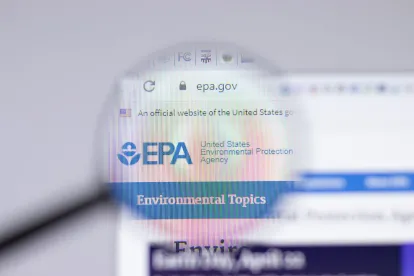The United States Environmental Protection Agency (US EPA) continues to advance various aspects of its chemicals regulatory agenda under the Toxic Substances Control Act (TSCA). A key part of the Biden Administration’s revisions to the TSCA program is its planned new screening approach for assessing ambient air and water exposures to fenceline communities. This screening approach is intended to broaden the scope of chemical risk evaluations to include exposures to fenceline communities from air emissions and water discharges of chemicals undergoing risk evaluation.
The screening assessment will be used to re-evaluate those chemicals that have already undergone risk assessment, which previously did not include air and water releases of the chemical under evaluation, in accordance with general TSCA policy to consider only exposures not regulated under other US EPA programs. In June 2021, US EPA announced significant changes it planned for risk evaluations issued under TSCA, including reversing its policy of excluding such pathways. The Agency explained that it planned to develop new screening approaches and methods to broaden the scope of the risk evaluations. Based on the results of these screening assessments, US EPA planned to determine whether the risk evaluations that have already been completed should be re-opened.
In furtherance of this new policy, US EPA released for public comment its draft Screening Level Approach for Assessing Ambient Air and Water Exposures to Fenceline Communities (Screening Level Approach) in January 2022, calling it “Version 1.0,” for use in assessing the exposure of fenceline communities by air and water pathways not previously considered in the risk evaluations. Fenceline communities are proposed to include human receptors within 10,000 meters of the facility. The Screening Level Approach relies on data from the 2019 Toxics Release Inventory (TRI) to estimate air releases of chemicals and uses modeling to supplement any data gaps. Ambient air exposure levels are estimated using US EPA’s primary air modeling tool, AERMOD. Worker exposure is also considered using various modeling tools. For water, the Screening Level Approach relies upon water release information from the published risk evaluations and a US EPA model which estimates water pathway exposures. The Agency noted that it would be expanding the scope of this screening level approach in a “Version 2.0,” which is planned to include a method to address broader potential environmental justice concerns and cumulative or aggregate exposures to chemicals.
Industry stakeholders and environmental groups alike raised concern about the level of uncertainty present in the methodology. Industry commenters highlighted the numerous conservative assumptions about exposure levels, while environmental commenters argued the methodology was not protective enough. Additionally, the Agency’s Science Advisory Committee on Chemicals (SACC) determined that the Screening Level Approach did not adequately assess risk for certain populations.
It is unclear whether the concerns expressed by commenters and the SACC will significantly delay finalization of the Screening Level Approach, though US EPA has stated the revised, final Screening Level Approach will be issued within the coming months. After the finalization of Version 1.0 of the Screening Level Approach, Version 2.0 is likely to expand the scope of chemical risk evaluations under TSCA even more broadly if US EPA follows through with its stated intent to include environmental justice issues and aggregate exposures. Squire Patton Boggs will continue to monitor this issue as it develops.




 />i
/>i

